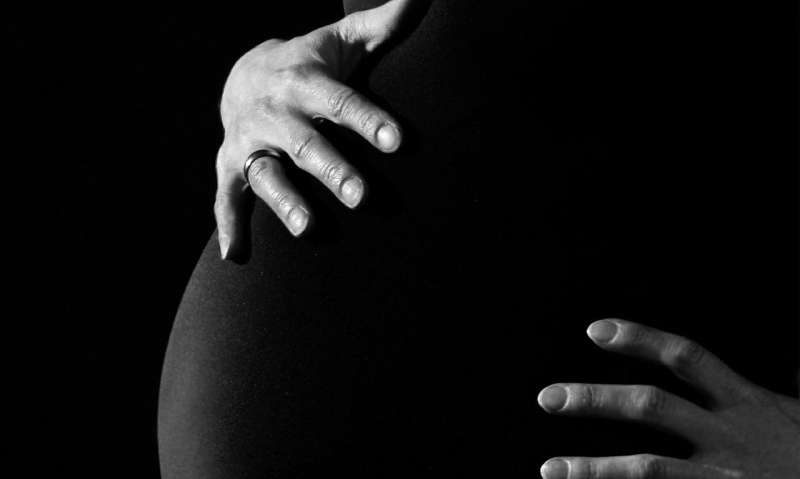Higher risk of future fecal incontinence after sphincter injuries

The risk of subsequent fecal incontinence and intestinal gas leakage is significantly higher among women who, during childbirth, have suffered a sphincter injury and consequent damage to the anal sphincter muscle, was shown in a new study from the University of Gothenburg.
Most births in Sweden occur without complications for the mother and child. Mild perimeal tears are relatively common, but self-healing usually takes place. Alternatively, these tears can be sutured without lasting ill-effects.
However, damage to the ring of muscles around the anus—the anal sphincter, the focus of the current study—also sometimes occurs. In Sweden, according to the latest statistics in the Swedish Medical Birth Register, approximately one woman in 20 sustain a rupture of the anal sphincter the first time she gives birth.
The study was based on register data on 7,741 women who gave birth to two children between 1992 and 1998. This information was combined with their responses to a questionnaire about fecal incontinence symptoms and, if the women had current symptoms, how these were affecting them some 20 years later, when they were aged 50-60.
The results, published in the American Journal of Obstetrics and Gynecology, show that for women sustaining sphincter injuries at the first birth, the risk of sphincter injury rose threefold at the second; and, moreover, the likelihood of future fecal incontinence increased with the number of injuries.
Of the women who avoided sphincter injury entirely in two vaginal births, 11.7% reported some degree of fecal incontinence 20 years later. The corresponding proportion among those who incurred sphincter damage at one of the births was 23.8%, and at both births 36.1%.
Severe fecal incontinence followed a similar pattern: from 1.8% in the women without sphincter damage to 5.4% and 9% after, respectively, one or two births causing sphincter injury. Leakage of liquid feces and gas was most common; in severe cases, solid feces were leaked as well.
"For women affected by sphincter damage who have had fecal incontinence later in life, there are few or no effective surgical treatments, and it often leads to chronic suffering, with social isolation as a result. Preventing sphincter injuries is the paramount measure," says Maria Gyhagen, researcher in obstetrics and gynecology at Sahlgrenska Academy, University of Gothenburg, and gynecologist at Södra Älvsborg Hospital in Borås, who was responsible for the study.
Although a sphincter injury can occur without known risk factors, the likelihood is greater in first-time mothers; after previous sphincter damage; during an assisted delivery using a ventouse suction cup and forceps; and, if the baby is large, at the first vaginal birth after a previous cesarean section. An elevated risk of fecal incontinence after ventouse delivery was demonstrated in a previous study from the same research group.
"In this study, we've been able to determine how sphincter injuries are associated with involuntary intestinal incontinence much later on in life, which has been questioned before. This must be taken into consideration in counseling for mothers-to-be whose risk of injury is highest," Gyhagen concludes.
More information: Ida E.K. Nilsson et al, Symptoms of fecal incontinence two decades after no, one, or two obstetrical anal sphincter injuries, American Journal of Obstetrics and Gynecology (2020). DOI: 10.1016/j.ajog.2020.08.051


















